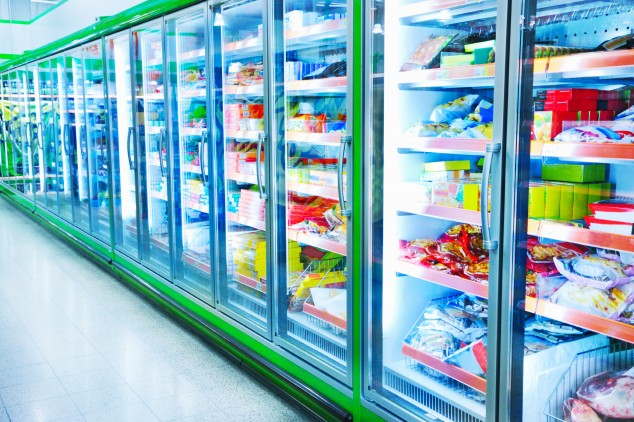
A few weeks ago (July 15 to be exact), Alexis C. Madrigal, a senior editor for The Atlantic, described America’s necessary network of refrigerated food storage and refrigerated food transportation in, "A Journey Into Our Food System's Refrigerated-Warehouse Archipelago." Madrigal outlined something that Americans take for granted—our system of keeping food grown in California edible in Virginia.
The Winter Grid
Specifically citing Nicola Twilley, a contributor to the Atlantic and creator of the “Perishable: An Exploration of the Refrigerated Landscape of America” exhibit at the Center for Land Use Interpretation in Los Angeles , Madrigal articulates the vastness of the underlying winter grid which most of America’s food passes through. Madrigal writes:
And it’s not just the stuff in the freezer! “At least 70 percent of the food we eat each year passes through or is entirely dependent on the cold chain for it’s journey from farm to fork, including foods that, on the surface, seem unlikely candidates for refrigeration,” Twilley writes in introducing her show.
Madrigal continues to explain what most of us don’t see, the interlocking grid of refrigerated food, in which the focus is not cities like Chicago, but those areas that can deliver food easily to Milwaukee, St. Louis, Kansas City, and Chicago. Furthermore, he shows how one author, Tom Wolfe, uniquely describes the characteristics of warehouse logistics hubs that hold and chill the food you will eventually eat. For his novel, A Man in Full, Tom Wolfe went to countless food storage warehouses across America, and found a juxtaposition between their location and the “hip” metropolis—the warehouses are close to, but not within the cities.
Additionally, Madrigal highlights some key themes in the things people don’t notice. The article then obviously wants you to notice those things, if not for the sake of interesting information, then for the sake of being an informed consumer.
Dickson's Role
At Dickson, we are a cog in this system, just like you and your fork.
If I told you that Company X mapped, recorded, and analyzed the temperature of their banana warehouse, and Company Y did not, which would you buy from? No, this is not a “Call to Action Campaign.” Instead, I want to highlight something Madrigal left out of his description of the refrigerated food grid: thermometers and data loggers. Measuring and recording temperature and humidity data is no easy task . . . for most. Here at Dickson, we specialize and excel in it. Dickson offers companies that produce, store, and transport food the ability to monitor and record the data necessary for keeping food fresh—and more importantly—safe.
We Know Applications
We’d like you to believe we are the most important cog in the system. If this seems like a stretch, we can at least agree that logging temperature is necessary and worthwhile. I’m going to take a wild guess and say you chose Company X over Company Y in the previous scenario. Sometimes however, it’s hard for the individual consumer to notice the difference. Also, usually the distinction isn't so black and white. More often, it’s a much closer comparison, with Company X using one product design to monitor their product’s temperature, and Company Y using another.
Dickson both educates companies on proper temperature monitoring techniques, and learns from them. (Check out our videos on monitoring a Smokehouse and a Dairy Processing Facility.) Specifically, the variety of products Dickson offers allows us to tackle new problems in applications (such as the winter grid) when they arise.
We don't just sell environmental monitoring products to food companies, we sell solutions.
